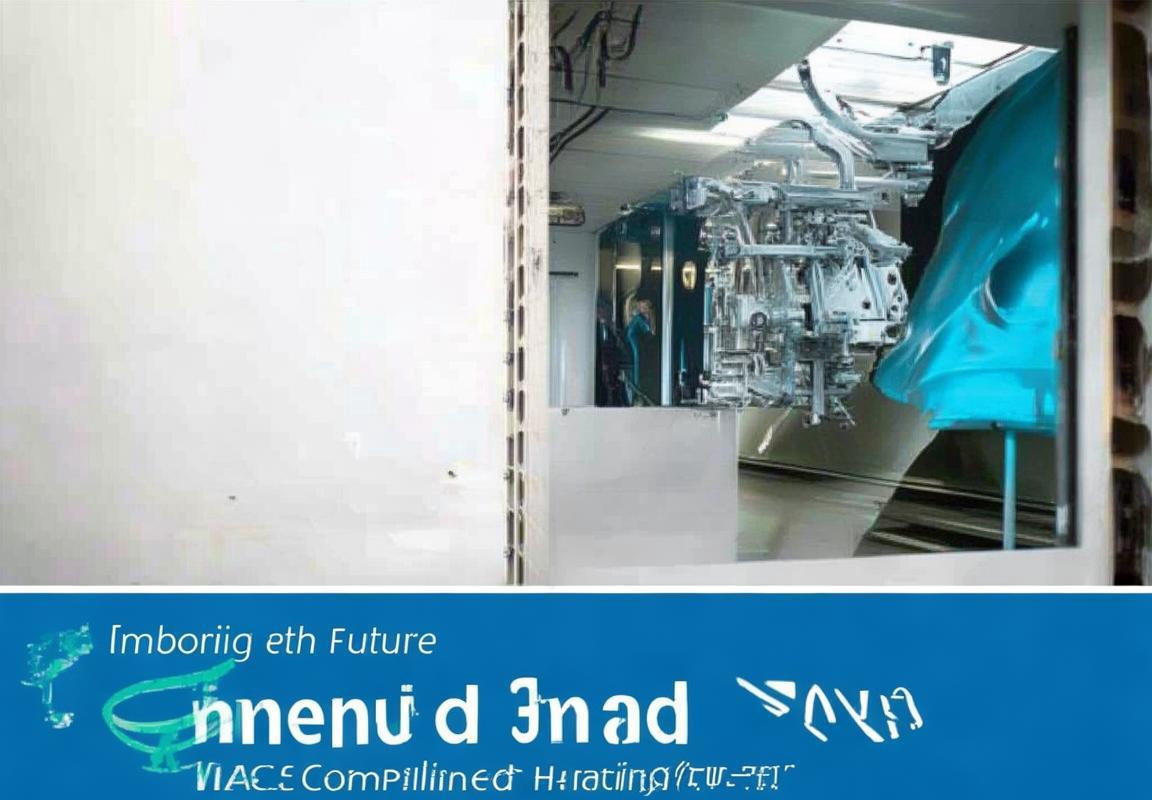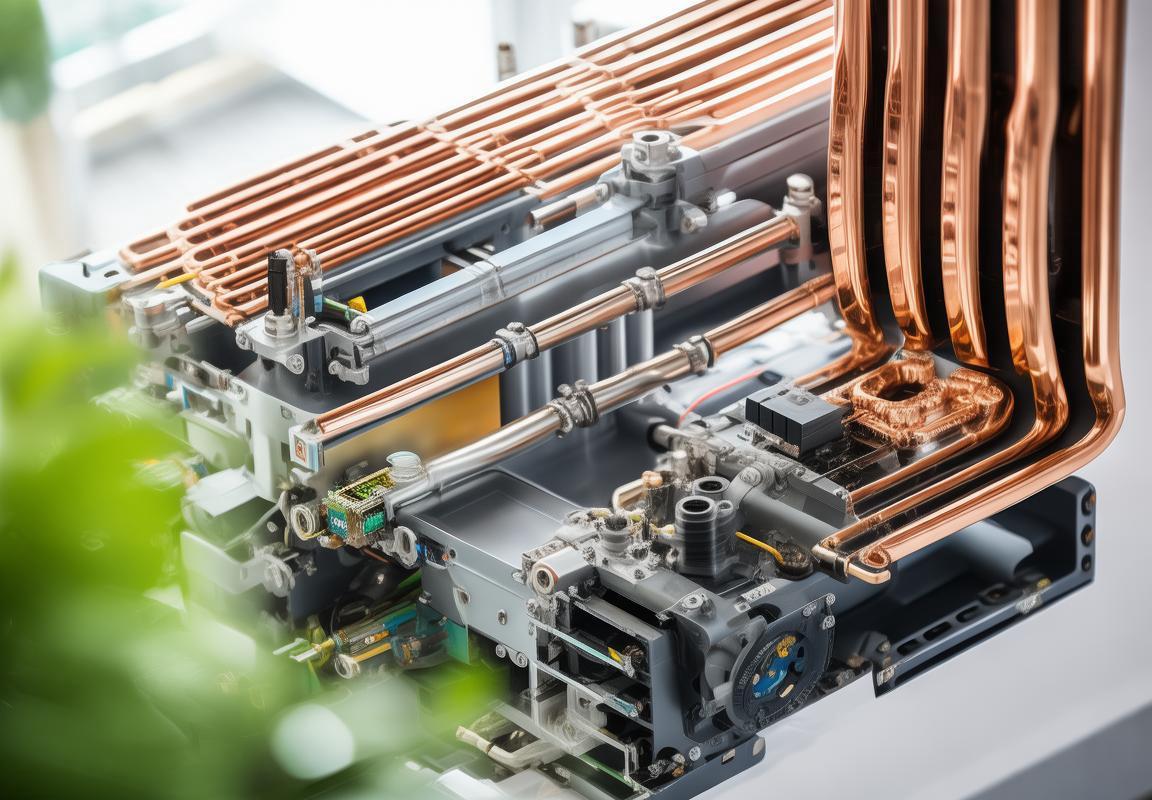In an era where environmental concerns are at the forefront, the demand for sustainable and eco-friendly solutions has never been greater. The heating industry, in particular, plays a significant role in energy consumption and waste generation. Enter the RoHS 3 compliant heating systems, which are not only reshaping the landscape of this sector but also paving the way for a greener future. This article delves into the intricacies of RoHS 3 compliance, its benefits, and the real-world applications that are transforming the way we think about heating solutions.
Introduction to RoHS 3 Compliance
In today’s fast-paced world, where technology and innovation are at the forefront, it’s crucial for businesses to stay ahead of the curve. One such regulatory standard that has gained significant attention is the RoHS 3 compliance. This article delves into the essence of RoHS 3 compliance, its significance, and how it pertains to heating systems.
RoHS 3, or the Restriction of Hazardous Substances, is an EU directive that aims to restrict the use of certain hazardous substances in electrical and electronic equipment. The third iteration of this directive builds upon the previous versions, enhancing the restrictions and expanding the scope to include more substances and more products.
The primary goal of RoHS 3 is to protect human health and the environment by reducing the environmental impact of electrical and electronic equipment. It does this by eliminating or limiting the use of hazardous substances such as lead, cadmium, mercury, hexavalent chromium, polybrominated biphenyls (PBBs), and polybrominated diphenyl ethers (PBDEs) in products.
For businesses, especially those in the manufacturing and supply chain sectors, understanding and adhering to RoHS 3 compliance is not just a legal requirement but also a strategic move. It demonstrates a commitment to sustainability and environmental responsibility, which can enhance brand reputation and attract environmentally conscious customers.
When it comes to heating systems, RoHS 3 compliance is particularly important. These systems are often used in a variety of applications, from residential to commercial settings, and their components can have a significant impact on the environment if not properly managed. By ensuring that heating systems are RoHS 3 compliant, manufacturers can minimize the environmental footprint of their products.
One of the key aspects of RoHS 3 compliance for heating systems is the use of non-hazardous materials. This means that manufacturers must carefully select materials that do not contain the restricted substances. For instance, instead of using lead solder, which is harmful to the environment, manufacturers can opt for lead-free solders that are just as effective but much safer.
Another critical element is the design of the heating system itself. RoHS 3 compliant heating systems must be designed in a way that allows for the easy removal and recycling of components at the end of their life cycle. This not only reduces waste but also ensures that hazardous materials are not left to leach into the environment.
The process of achieving RoHS 3 compliance for heating systems involves several steps. First, manufacturers must conduct a thorough assessment of their products to identify any components that contain restricted substances. Once identified, they must develop a plan to replace these components with compliant alternatives.
This can be a complex task, as it often requires finding substitutes that not only meet the performance requirements of the heating system but also adhere to RoHS 3 standards. It may involve working closely with suppliers to ensure that the materials used are free from restricted substances.
Additionally, manufacturers must document their compliance efforts, including the materials used, the design changes made, and any certifications obtained. This documentation is crucial for demonstrating compliance to regulatory authorities and customers alike.
The benefits of RoHS 3 compliance for heating systems are multifaceted. For one, it helps to reduce the environmental impact of these systems over their entire lifecycle. This not only contributes to a healthier planet but also aligns businesses with global sustainability trends.
From a business perspective, RoHS 3 compliance can open up new markets. As more consumers and businesses become environmentally conscious, they are increasingly looking for products that are certified as eco-friendly. By offering RoHS 3 compliant heating systems, manufacturers can tap into this growing market segment.
Moreover, compliance with RoHS 3 can also lead to cost savings in the long run. While the initial investment in developing compliant products may be higher, the reduction in waste and the potential for recycling can offset these costs over time.
In conclusion, RoHS 3 compliance is a critical consideration for manufacturers of heating systems. It not only ensures that products are environmentally responsible but also opens up new opportunities for growth and innovation. By embracing RoHS 3 standards, businesses can contribute to a sustainable future while also enhancing their competitive edge in the marketplace.

Understanding the RoHS 3 Directive
The RoHS 3 Directive, or the Restriction of Hazardous Substances, is an EU regulation that sets strict standards for the use of certain hazardous materials in electrical and electronic equipment. It’s a crucial piece of legislation designed to protect human health and the environment. To understand the directive, it’s essential to delve into its key aspects and the reasons behind its implementation.
The directive was initially introduced in 2002, with the RoHS 1 version, and has since been updated to its third iteration. Each version has brought about stricter regulations and expanded the scope of products that fall under its purview. RoHS 3, which came into effect in 2019, builds upon the earlier versions by adding more substances to the list of restricted materials and clarifying the rules for the placement on the market of new products.
One of the primary goals of RoHS 3 is to reduce the environmental impact of electrical and electronic equipment (EEE) by restricting the use of hazardous substances. These substances include lead, cadmium, mercury, hexavalent chromium, polybrominated biphenyls (PBBs), and polybrominated diphenyl ethers (PBDEs), among others. These chemicals can be highly toxic and persist in the environment for long periods, causing significant harm to ecosystems and human health.
Under RoHS 3, the list of restricted substances has been expanded to include new additives like benzophenone-3, certain phthalates, and antimony trioxide, among others. This expansion reflects the evolving understanding of the environmental and health risks associated with different chemicals. It also means that manufacturers must now be more vigilant in identifying and avoiding these substances in their products.
Another significant change in RoHS 3 is the clarification of the scope of the directive. It now includes medical devices, monitoring and control instruments, and certain types of monitoring equipment. This broader scope acknowledges the increasing role of EEE in various sectors, including healthcare and environmental monitoring, and aims to ensure that these devices are also safe for both users and the environment.
The directive also introduces new requirements for the notification of non-compliance and the withdrawal of non-compliant products from the market. This ensures that consumers are not exposed to hazardous products and that the market is protected from the entry of non-compliant goods. Additionally, RoHS 3 now requires the provision of information on the content of restricted substances in products, which can be used by consumers and recyclers to make informed decisions.
One of the most notable changes in RoHS 3 is the introduction of a compliance deadline for medical devices. Unlike other products, medical devices have a longer transition period, with compliance expected by 2021. This extension recognizes the complexity and unique regulatory environment of medical devices, which often require a more nuanced approach to ensure both safety and innovation.
For businesses, understanding RoHS 3 means navigating a complex web of requirements and procedures. It involves not only the identification and avoidance of restricted substances but also the documentation and reporting of compliance efforts. Companies must invest in training staff, implementing quality management systems, and regularly auditing their supply chains to ensure that all components and materials used in their products meet the directive’s standards.
Moreover, RoHS 3 places a strong emphasis on the right to information, allowing consumers to make informed choices about the products they purchase. This means that businesses must be transparent about the substances used in their products, which can pose challenges, especially for those dealing with complex supply chains that may involve multiple suppliers and manufacturers.
In conclusion, the RoHS 3 Directive is a critical regulation that impacts the entire lifecycle of electrical and electronic equipment. It requires manufacturers to be more environmentally conscious and health-aware in their design and production processes. By understanding the intricacies of RoHS 3, businesses can ensure compliance, mitigate risks, and contribute to a safer and cleaner future.

Key Components of a RoHS 3 Compliant Heating System
In the realm of heating systems, achieving RoHS 3 compliance means adhering to strict regulations that limit the use of hazardous substances. Let’s delve into the key components that make up a RoHS 3 compliant heating system.
-
Lead-Free Soldering Techniques: One of the most critical aspects of a RoHS 3 compliant heating system is the use of lead-free soldering methods. Traditional leaded solder contains a significant amount of lead, which is toxic and harmful to both human health and the environment. RoHS 3 compliant systems, however, employ alternative solders that are free of lead, ensuring that the entire heating process is environmentally friendly.
-
Electronic Components with Low Hazardous Substance Content: The electronic components within a heating system must meet specific criteria outlined by RoHS 3. This includes a strict limit on the content of certain hazardous substances such as cadmium, mercury, hexavalent chromium, polybrominated biphenyls (PBBs), and polybrominated diphenyl ethers (PBDEs). These components are crucial for the system’s operation, and their compliance with RoHS 3 ensures that the heating system does not contribute to environmental pollution.
-
Copper and Aluminum Heat Exchangers: Heat exchangers are at the heart of any heating system, and their composition is a key factor in achieving RoHS 3 compliance. While copper is a common material for its excellent heat conductivity, it must be free from any additives that contain hazardous substances. Aluminum, another popular choice for its lightweight and corrosion resistance, also needs to be processed without harmful chemicals to meet the RoHS 3 standards.
-
Environmentally Friendly Insulation Materials: Insulation is essential for maintaining the efficiency of a heating system and reducing energy consumption. RoHS 3 compliant heating systems use insulation materials that are free from polyvinyl chloride (PVC) and other flame retardants that can release harmful substances when heated. Instead, these systems opt for alternatives like glass wool, mineral wool, or other eco-friendly insulation materials.
-
Recyclable and Durable Materials: The materials used in the construction of a RoHS 3 compliant heating system are not only environmentally friendly but also designed for longevity and recyclability. From the casing to the internal components, the choice of materials ensures that the system can be disassembled and recycled at the end of its life cycle, minimizing waste and environmental impact.
-
Energy-Efficient Motors and Controls: A heating system’s motor and control units are integral to its performance and energy efficiency. RoHS 3 compliant systems utilize energy-efficient motors that consume less power and contribute to reduced energy costs. Additionally, the control units are designed to optimize heating output, ensuring that the system operates at the most efficient level possible.
-
Certification and Quality Assurance: To be truly RoHS 3 compliant, a heating system must undergo rigorous testing and certification. This includes verifying that all components meet the directive’s strict limits for hazardous substances. Quality assurance protocols are in place to ensure that the system is not only compliant but also reliable and safe for use.
-
Documentation and Traceability: A RoHS 3 compliant heating system comes with comprehensive documentation that outlines the materials used and confirms compliance. This documentation is crucial for traceability, allowing manufacturers and users to verify that the system adheres to the directive’s requirements throughout its lifecycle.
By focusing on these key components, manufacturers can create heating systems that are not only compliant with RoHS 3 but also contribute to a healthier planet and a more sustainable future. The commitment to using non-toxic materials and energy-efficient technologies reflects a broader shift towards eco-conscious product design and environmental stewardship.

Why Choose a RoHS 3 Compliant Heating System?
Choosing a RoHS 3 compliant heating system is a decision that brings with it a multitude of advantages, both environmentally and economically. Here’s why such a system stands out in the market:
-
Environmental Responsibility: RoHS 3, or the Restriction of Hazardous Substances, is a European Union directive that restricts the use of certain hazardous materials in electrical and electronic equipment. By opting for a RoHS 3 compliant heating system, you’re making a conscious choice to reduce the environmental impact. This means fewer harmful substances like lead, mercury, cadmium, hexavalent chromium, and polybrominated biphenyls (PBBs) end up in landfills and ecosystems.
-
Longevity of the System: Components that adhere to RoHS 3 standards are often more durable and less prone to failure. This longevity translates to a longer lifespan for your heating system, reducing the frequency of replacements and the subsequent waste generated by discarded equipment.
-
Enhanced Safety: The restriction of hazardous substances in heating systems not only benefits the environment but also enhances the safety of the users. Without these harmful materials, the risk of fire, toxic emissions, and other safety hazards is significantly reduced.
-
Market Credibility: By choosing a RoHS 3 compliant heating system, you’re aligning with a global standard that is recognized and respected worldwide. This can boost the credibility of your business, especially if you’re targeting international markets or aiming to be seen as a leader in sustainability.
-
Cost Savings Over Time: While the initial cost of a RoHS 3 compliant heating system may be higher due to the use of more expensive, environmentally friendly materials, the long-term savings can be substantial. Reduced maintenance costs, lower energy consumption, and the potential for government incentives can offset the initial investment.
-
Regulatory Compliance: In regions where RoHS 3 is a legal requirement, using a compliant heating system ensures that your business is in full compliance with local laws. This avoids the risk of fines, legal action, and damage to your company’s reputation.
-
Innovation and Technological Advancement: The push for RoHS 3 compliance has spurred innovation in the heating system industry. Manufacturers are continuously developing new technologies and materials that are not only compliant with the directive but also more efficient and sustainable. This means that choosing a RoHS 3 compliant system can grant you access to cutting-edge technology.
-
Health Benefits: By reducing the presence of harmful substances in your home or workplace, you’re creating a healthier environment for everyone. This is particularly important for individuals with allergies or sensitivities to certain chemicals.
-
Brand Image and Customer Loyalty: Consumers are increasingly looking for brands that demonstrate a commitment to sustainability. By choosing a RoHS 3 compliant heating system, you’re not only contributing to a greener planet but also enhancing your brand image. This can lead to increased customer loyalty and trust.
-
Global Trends and Future-proofing: As the world becomes more environmentally conscious, the demand for sustainable products is on the rise. By investing in a RoHS 3 compliant heating system, you’re future-proofing your business against potential market shifts and consumer preferences.
In summary, the choice to invest in a RoHS 3 compliant heating system is a strategic move that aligns with global sustainability goals, enhances safety and efficiency, and can lead to significant cost savings and brand benefits over time.

The Benefits of RoHS 3 Compliance for Businesses
Investing in a RoHS 3 compliant heating system can bring a multitude of benefits to businesses, from enhancing reputation to ensuring regulatory adherence. Here’s a closer look at some of the key advantages:
-
Enhanced Brand Image and Consumer Trust: By choosing a RoHS 3 compliant heating system, businesses can project an image of environmental responsibility and ethical manufacturing. Consumers are increasingly aware of the impact of their purchases on the environment and are more likely to support companies that prioritize sustainability. This can lead to increased brand loyalty and a competitive edge in the market.
-
Compliance with International Regulations: The RoHS 3 directive is a European Union regulation that restricts the use of certain hazardous substances in electrical and electronic equipment. By adhering to these standards, businesses can ensure that their products are compliant with international regulations, which is crucial for global trade. This compliance can open doors to new markets and partnerships, as customers and suppliers alike value the assurance that products meet stringent environmental standards.
-
Reduced Risk of Legal Penalties and Litigations: Non-compliance with RoHS 3 can lead to significant legal consequences, including fines and potential lawsuits. By investing in a compliant heating system, businesses mitigate these risks, avoiding costly legal battles and maintaining a stable business environment. This peace of mind allows companies to focus on growth and innovation rather than legal issues.
-
Cost Savings Over Time: While the initial investment in a RoHS 3 compliant heating system may be higher, the long-term savings can be substantial. By using materials that are less harmful to the environment, businesses can reduce waste and the need for frequent replacements. This can lead to lower operational costs and a more efficient supply chain.
-
Improved Product Quality and Reliability: RoHS 3 compliant systems often incorporate higher-quality components that are less prone to failure. This not only extends the lifespan of the equipment but also reduces downtime and maintenance costs. Customers appreciate reliable products, and businesses benefit from reduced warranty claims and service calls.
-
Access to Government Incentives and Grants: Many governments offer incentives and grants to businesses that adopt environmentally friendly practices. By investing in a RoHS 3 compliant heating system, companies may qualify for these financial benefits, which can offset the initial investment and provide additional resources for growth.
-
Enhanced Employee Satisfaction and Productivity: A work environment that demonstrates a commitment to sustainability can boost employee morale. Employees are more likely to feel valued and engaged when their workplace reflects their personal values. This can lead to higher productivity and a more positive corporate culture.
-
Long-Term Strategic Planning: Adhering to RoHS 3 standards can help businesses anticipate future regulatory changes. As environmental regulations continue to evolve, companies that have already invested in compliant technologies are better positioned to adapt quickly. This forward-thinking approach can lead to a competitive advantage in an increasingly eco-conscious market.
-
Global Market Expansion: In today’s interconnected world, businesses that can offer products that meet international environmental standards have a broader market reach. A RoHS 3 compliant heating system can be a key differentiator, allowing companies to expand into new regions and attract a wider customer base.
-
Positive Impact on the Environment: Perhaps the most significant benefit of RoHS 3 compliance is the positive impact on the environment. By reducing the use of hazardous substances, businesses contribute to the reduction of electronic waste and the protection of ecosystems. This not only aligns with the values of many consumers but also supports the broader goal of preserving the planet for future generations.
In conclusion, the benefits of choosing a RoHS 3 compliant heating system for businesses are multifaceted, ranging from immediate cost savings and risk reduction to long-term strategic advantages and environmental stewardship. By prioritizing compliance, businesses can create a sustainable future for themselves and the world around them.

How We Ensure RoHS 3 Compliance in Our Heating Systems
Ensuring RoHS 3 compliance in our heating systems is a meticulous process that involves several key steps and considerations. Here’s an in-depth look at how we accomplish this:
We meticulously source components that are free from restricted substances. This means conducting thorough research and selecting suppliers who adhere to strict quality control measures to guarantee that all parts used in our heating systems are RoHS 3 compliant.
Regular audits and inspections are a cornerstone of our compliance process. Our team of experts conducts regular checks to ensure that all materials and products meet the stringent standards set forth by the RoHS 3 directive. These audits are not just internal; we also engage with third-party certifiers to validate our compliance.
We invest in advanced testing equipment to analyze our heating systems for the presence of hazardous substances. This includes using X-ray fluorescence (XRF) analyzers and other sophisticated tools that can detect trace amounts of prohibited materials. The accuracy of these tests is crucial in maintaining our RoHS 3 compliance.
Our engineers are trained extensively on the RoHS 3 directive and its implications. They understand the importance of designing and manufacturing heating systems that not only meet but also exceed the required standards. This knowledge is essential for identifying potential risks and implementing appropriate solutions.
We maintain detailed documentation for every aspect of our heating systems. From the bill of materials to the final assembly, every step is documented to ensure transparency and traceability. This not only helps us in maintaining compliance but also aids in quick identification and rectification of any non-compliant issues.
Collaboration with industry experts is a key strategy for us. We often consult with chemists, environmental engineers, and legal advisors to stay updated on the latest developments in RoHS 3 regulations. This collaborative approach ensures that our heating systems are always at the forefront of compliance.
Our supply chain management is robust, ensuring that only RoHS 3 compliant materials are used in the manufacturing process. We have established clear communication channels with our suppliers to enforce these standards. This includes specifying the requirements in our purchase orders and conducting supplier audits to verify compliance.
We have implemented a continuous improvement program focused on reducing the environmental impact of our heating systems. This includes exploring alternative materials and processes that are more sustainable and less harmful to the environment, while still meeting RoHS 3 standards.
Our customer service team is well-versed in RoHS 3 compliance and can provide detailed information to our clients. They understand the importance of compliance and are trained to answer any questions our customers may have about the environmental safety of our products.
We stay informed about the latest changes in the RoHS 3 directive through ongoing education and professional development. This ensures that our compliance efforts are not just reactive but proactive, allowing us to anticipate and adapt to any regulatory changes.
Our commitment to RoHS 3 compliance is reflected in our product design. We integrate environmentally friendly features that not only meet the directive’s requirements but also enhance the overall performance and longevity of our heating systems.
In conclusion, ensuring RoHS 3 compliance in our heating systems is a comprehensive process that involves every level of our organization. From sourcing materials to ongoing training and customer support, our approach is holistic and unwavering in its dedication to environmental responsibility and regulatory adherence.

Case Studies: Real-World Applications of RoHS 3 Compliant Systems
In the realm of electronics, compliance with regulations such as the RoHS 3 directive is not just a legal requirement; it’s a commitment to environmental responsibility and safety. Let’s dive into some real-world applications where RoHS 3 compliant systems have made a tangible difference.
In the Automotive IndustryAutomotive manufacturers are at the forefront of RoHS 3 compliance, as vehicles are a mix of various electronic components. Case in point, a major automotive brand replaced traditional lead-based solders with lead-free alternatives in their heating systems. This not only met the RoHS 3 standards but also resulted in more durable and reliable systems. The switch reduced the environmental footprint and improved the longevity of the vehicles, enhancing the brand’s reputation for sustainability.
In Industrial ManufacturingIndustrial heating systems, used in processes like heat treatment and soldering, are critical to manufacturing. A leading manufacturer of industrial ovens adopted RoHS 3 compliant heating elements, which were designed to handle high temperatures without leaching harmful substances. This not only satisfied regulatory requirements but also allowed the company to offer a product that was safer for workers and the environment. The transition was seamless, with no significant impact on production timelines or costs.
In Commercial BuildingsCommercial buildings, from office spaces to retail stores, rely on heating systems for comfort and energy efficiency. A case study in a large office complex revealed that replacing old, non-compliant heating units with RoHS 3 compliant models not only met environmental standards but also improved the overall performance of the system. The new units were more energy-efficient, reducing utility bills and minimizing the carbon footprint of the building.
In Residential PropertiesResidential heating systems are often overlooked in terms of compliance, but they play a crucial role in everyday life. A developer of eco-friendly housing projects replaced traditional radiators with RoHS 3 compliant versions, ensuring that the homes were not only comfortable but also environmentally friendly. The new systems were not only compliant but also contributed to healthier indoor air quality, as they did not emit harmful substances.
In Healthcare FacilitiesHealthcare environments are particularly sensitive to the materials used in heating systems due to the potential for exposure to harmful substances. A hospital upgraded its heating infrastructure to RoHS 3 compliant systems, which helped to create a safer environment for both patients and staff. The compliant systems were designed to reduce the risk of allergic reactions and respiratory issues, aligning with the hospital’s commitment to patient care and environmental stewardship.
In Education InstitutionsEducational facilities, such as schools and universities, are increasingly aware of the importance of environmental responsibility. A school district replaced the heating systems in their older buildings with RoHS 3 compliant options, ensuring that the learning environment was not only conducive to education but also safe. The compliant systems were also designed to be more energy-efficient, helping the district to reduce their energy consumption and save on long-term operational costs.
In Public TransportationPublic transportation systems, such as buses and trains, are critical for reducing carbon emissions. A transit authority replaced the heating elements in their fleet with RoHS 3 compliant models, contributing to a greener operation. The new systems were designed to be more efficient, reducing the overall energy consumption of the vehicles and further reducing the authority’s carbon footprint.
These case studies illustrate the diverse applications of RoHS 3 compliant heating systems across various industries. Each example shows how adherence to these standards can lead to a range of benefits, from improved environmental performance to enhanced safety and cost savings. As regulations continue to evolve, the adoption of RoHS 3 compliant systems is becoming an integral part of responsible business practices.

Conclusion: The Future of Eco-Friendly Heating Solutions
In the ever-evolving landscape of environmental regulations and consumer consciousness, the future of eco-friendly heating solutions is a topic that resonates with businesses and homeowners alike. As we move towards more sustainable practices, the integration of RoHS 3 compliant heating systems is not just a regulatory requirement but a strategic move towards a greener, more efficient future. Here are some insights into what this future might hold:
The integration of advanced technologies into heating systems is set to revolutionize the way we think about warmth and comfort. Smart heating solutions that can adapt to changing temperatures and usage patterns are not just more efficient; they are also more sustainable. These systems can reduce energy consumption by optimizing heating schedules, leading to lower carbon footprints and reduced utility bills.
Renewable energy sources are becoming increasingly accessible, and the future of heating solutions will likely see a significant blend of traditional and renewable energy. Solar thermal panels, geothermal heating, and wind power are just a few examples of how heating systems can harness natural energy to provide warmth. This shift not only aligns with environmental goals but also offers long-term cost savings and energy independence.
Energy storage systems are another key component of the future heating landscape. With the ability to store excess energy generated from renewable sources, these systems can provide a continuous and reliable heat supply, even when the sun isn’t shining or the wind isn’t blowing. This ensures a seamless transition to eco-friendly heating without compromising on comfort or efficiency.
The role of the consumer in shaping the future of heating solutions cannot be overstated. As awareness of environmental issues grows, consumers are increasingly seeking out products that are not only efficient but also sustainable. This demand is driving manufacturers to innovate and offer heating systems that are not only RoHS 3 compliant but also designed with the environment in mind.
Regulatory frameworks like RoHS 3 are not just a set of rules to be followed; they are a catalyst for change. They push manufacturers to reduce the use of hazardous substances in their products, leading to safer and more sustainable heating systems. This shift benefits not only the environment but also the health of the end-users, as these systems are free from harmful chemicals.
The future of heating solutions also involves a focus on modular and scalable designs. As buildings evolve and energy demands change, heating systems should be able to adapt. Modular systems allow for easy upgrades and replacements, ensuring that the heating infrastructure remains efficient and effective over the long term.
Innovation in materials science is another driving force behind the future of eco-friendly heating. New materials are being developed that are not only more sustainable but also more efficient. For example, phase change materials (PCMs) can store and release heat at a controlled rate, providing a stable and consistent heat source.
The integration of heating systems with smart home technology is also on the rise. These systems can be controlled remotely, allowing users to adjust temperatures and energy usage from anywhere. This not only adds convenience but also ensures that energy is used efficiently, reducing waste and environmental impact.
As we look to the future, the importance of collaboration cannot be overstated. Governments, businesses, and consumers must work together to promote the adoption of eco-friendly heating solutions. This includes investing in research and development, creating incentives for sustainable practices, and educating the public on the benefits of these systems.
The future of eco-friendly heating solutions is not just about compliance with regulations like RoHS 3; it’s about creating a world where energy is used responsibly and efficiently. It’s about harnessing the power of technology, innovation, and human ingenuity to create a sustainable and comfortable future for all. As we move forward, the possibilities are vast, and the potential for positive change is immense.